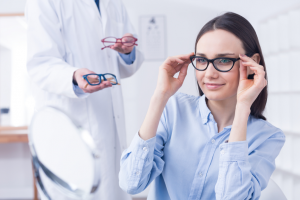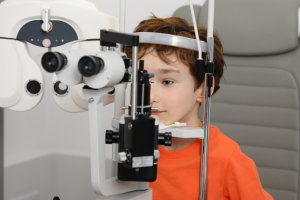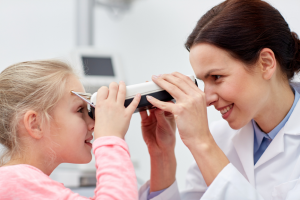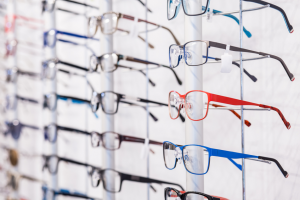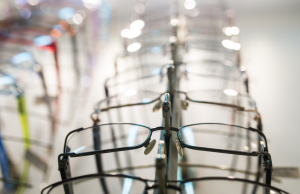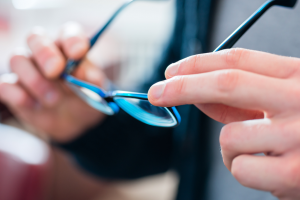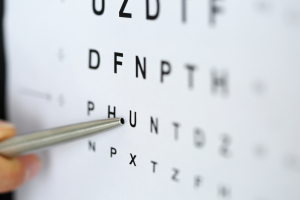
Is My Contact Lens Inside Out?
A question many newbie wearers have is: “How can I tell if my contact lens is inside-out?”
The difference can be subtle, but before placing a contact lens on your eye, make sure it looks like half a ball, not a soup bowl with a rim.
The trick is to place the lens on your finger so that a cup is formed. Then hold the lens up directly in front of your eyes so you’re looking at the side of the cup.
If the lens forms a “U” with the top edges flared out, it’s inside out. If it forms just a “U,” it’s in the correct position.
If you’re wearing lenses with a handling tint, another way is to place the lens on your fingertip and then look down at it. The edge of a tinted lens should look very blue (or green, depending on the tint); that won’t be the case if the lens is inverted.
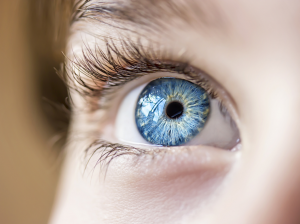
Some contact lenses also have a laser marking, such as the brand name, on the edge to help you. If you can read it properly, the lens is not inside out.
Don’t worry if you place a contact lens in your eye inside out. The lens will feel uncomfortable, but it can’t do any damage.
Applying Your Contact Lenses
Make sure you wash your hands thoroughly before applying your contact lenses, but avoid scented or oily soaps that might adhere to the lens surface. Especially avoid using products containing lanolin and moisturizing lotions.
Some eye doctors say to always apply the first contact lens in the same eye, so you’ll avoid the possibility of mixing up lenses for the right eye and left eye.
Other basic guidelines for contact lens application include:
- Gently shake your lens case containing the storage solution, to loosen the contact lens should it be stuck. (Don’t try pulling at the lens with your finger, or you might damage it.)
- Slide the lens out of its case and into the palm of your hand. Rinse thoroughly with the appropriate contact lens solution.
- Place the contact lens on the tip of your index or middle finger, which should be dry or mostly dry.
- With the fingers and thumb of your other hand, simultaneously pull up on your upper eyelid and down on your lower eyelid.
- Position the lens on your eye while looking upward or forward, whichever you find to be easier. You also can apply the contact lens by placing it on the white of the eye closest to your ear.
- Gently close your eye, roll your eyes in a complete circle to help the lens settle, and then blink.
- Look closely in the mirror to make sure the lens is centered on your eye. If it is, the lens should be comfortable and your vision should be clear.

Removing Your Contact Lenses
Always wash your hands before removing contact lenses. If you are standing in front of a sink, use a clean paper towel to cover the drain where the contact lens might accidentally fall.
To remove soft contact lenses, look upward or sideways while you pull down on your lower eyelid. With a finger, gently maneuver the lens onto the white of your eye. There, you can very gently pinch the lens together with your index finger and thumb and lift it off the eye.
Until you master contact lens removal, you might want to keep your fingernails short to avoid accidentally scratching and damaging your eye.
Gas permeable contact lenses can be removed by holding out the palm of your hand, bending over, and then opening your eye wide. With one finger of your other hand, pull the skin between your upper and lower eyelid (just outside the lateral aspect of your eye) outward toward your ear with your eye wide open. Then blink. The contact lens should pop right out and into your open palm.
Devices for removing contact lenses, called “plungers,” also are available from your eye doctor, and can be used to touch and directly remove a lens from your eye. Just make sure you touch only the lens and not your eye’s surface with these devices.
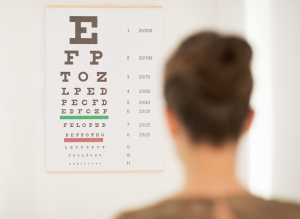
While you might hear a myth or two about someone “losing” a contact lens in the back of the eye, this is actually impossible because of a membrane that connects your eye to the back of your eyelid.
Contact Lenses And UV Light
Researchers have linked ultraviolet (UV) light to the formation of cataracts. Exposure to excessive UV light also may result in a condition called photokeratitis.
That’s why some contact lenses now contain a UV-blocking agent. You can’t tell if a contact lens has a UV blocker just by looking at it — the blocking agent is clear, so as not to disturb vision. The contact lens packaging will specify if the product has a UV blocker, or you can ask your eye doctor.
Very important: UV-blocking contacts are not meant to replace sunglasses. A contact lens covers only your cornea, not your entire eye.
However, UV-blocking contact lenses do help protect the portion of the white of your eye that is covered from formation of growths such as pingueculae and pterygia.
Sunglasses with UV protection can cover more of your eye and the parts of your face that surround the eye, depending on the size of the sunglass lens. That’s why contacts with UV blockers are designed to complement sunglass use as an added protection.
Contact Lens Safety Tips
- DO make sure contact lenses and lens storage cases are cleaned and disinfected regularly, according to your eye doctor’s instructions.
- DON’T place contact lenses in your mouth or use your saliva to wet them.
- DO replace contact lenses regularly, according to your eye doctor’s directions.
- DON’T “top off” old solution in your contact lens case. Instead, discard old solution and replace it with fresh solution.
- DO always rub contact lenses when you clean them, even if using a “no-rub” solution.

Eye Makeup and Contact Lenses
Getting makeup in your eye is annoying. But it’s even worse with contacts, because it can stick to the lenses instead of flushing right out. Follow these tips to keep your eyes looking and feeling good:
- Put your contact lenses on before applying makeup. And always wash your hands thoroughly before touching your contacts, so you won’t transfer any oils, creams or lotions to the lenses.
- Use only non-allergenic makeup. Almay and Clinique have eye-friendly products, but there are other good brands as well.
- Cream eye shadow is less likely to get in your eye than powder. But creams can irritate your eyes more if they do make it into your eyes. Choose water-based rather than oil-based creams.
- If you prefer powder, keep your eyes closed during application. Then, brush off any excess powder before opening your eyes.
- Never apply eyeliner between your lashes and your eye. Apply eyeliner only on the portion of your lashes that is well away from your eye.
- To remove eye makeup, wash and dry your hands. Then remove your contacts, being careful not to bump them into any makeup. Finally, use your eye makeup remover.
- Replace your eye makeup frequently — at least every three months. Don’t use old eye makeup, because over time bacteria will get into the product and then into your eyes, where it can cause an infection. One way to tell if your makeup is too old is if it smells funny. Also, don’t share your eye makeup with others.

